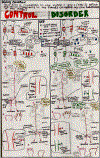NeuroLab 2.0: An Alternative Storyline Design Approach for Translating a Research-Based Summer Experience into an Advanced STEM+M Curriculum Unit that Supports Three-Dimensional Teaching and Learning in the Classroom
- PMID: 38835637
- PMCID: PMC11149925
- DOI: 10.15695/jstem/v7i1.03
NeuroLab 2.0: An Alternative Storyline Design Approach for Translating a Research-Based Summer Experience into an Advanced STEM+M Curriculum Unit that Supports Three-Dimensional Teaching and Learning in the Classroom
Abstract
In this case study, we describe an alternative storyline design approach that we adopted to translate an informal, out-of-school summer science experience with a strong emphasis on developmental neuroscience and data literacy into a more inclusive, replicable, and scalable experience for formal high school science instruction. Combining elements of problem- and project-based learning, a storyline is a curriculum model that engages students in the application of investigative science and engineering practices to incrementally build conceptual models that explain an observable (anchoring) phenomenon. Published reports on the storyline design process describe procedures and tools that are well suited to the creation of novel instructional units. However, these design methods are difficult to apply to projects aimed at translating pre-existing science experiences and resources into classroom storyline units. In this descriptive case study, we discuss a series of alternative design procedures that we utilized to achieve this adaptation. Our overarching project goal was to create the resources necessary to engage high school students in the construction of a multidimensional explanatory model for an unusual movement disorder that assimilates converging lines of behavioral, neuroanatomical, neurophysiological, molecular genetic, developmental, and cellular data. The methods described in this case study establish a design template for other biomedical scientists who are interested in adopting a storyline approach to bring aspects of their work or educational projects into science classrooms and into closer alignment with a new vision for science teaching and learning articulated in the National Research Council's A Framework for K-12 Science Education and the Next Generation Science Standards.
Keywords: Big Data; Clinical Neuroscience; Data Literacy; Developmental Neuroscience; High School Students; Interdisciplinary; Mirror Movement Disorder; NGSS; NeuroLab; Neurology; Precollege Students; Researcher-Educator Collaboration; STEM+M; STEMM; Science Practices; Scientific Modeling; Storylines; Student Collaboration.
Figures


Similar articles
-
NeuroLab Research Experiences: Extending the CURE Design Framework into an Informal Science Setting Dedicated to Pre-College STEM Instruction.J STEM Outreach. 2019;2(1):10.15695/jstem/v2i1.08. doi: 10.15695/jstem/v2i1.08. Epub 2019 Apr 25. J STEM Outreach. 2019. PMID: 32832882 Free PMC article.
-
Guide to Implementing the Next Generation Science Standards.Washington (DC): National Academies Press (US); 2015 Mar 27. Washington (DC): National Academies Press (US); 2015 Mar 27. PMID: 25927122 Free Books & Documents. Review.
-
Student and educator experiences of maternal-child simulation-based learning: a systematic review of qualitative evidence protocol.JBI Database System Rev Implement Rep. 2015 Jan;13(1):14-26. doi: 10.11124/jbisrir-2015-1694. JBI Database System Rev Implement Rep. 2015. PMID: 26447004
-
Mindset × Context: Schools, Classrooms, and the Unequal Translation of Expectations into Math Achievement.Monogr Soc Res Child Dev. 2023 Sep;88(2):7-109. doi: 10.1111/mono.12471. Monogr Soc Res Child Dev. 2023. PMID: 37574937
-
A review of the application of active learning pedagogies in undergraduate animal science curricula.J Anim Sci. 2023 Jan 3;101:skac352. doi: 10.1093/jas/skac352. J Anim Sci. 2023. PMID: 36692203 Free PMC article. Review.
References
-
- Auchincloss LC, Laursen SL, Branchaw JL, Eagan K, Graham M, Hanauer DI, Lawrie G, McLinn CM, Pelaez N, Rowland S, Towns M, Trautmann NM, Varma-Nelson P, Weston TJ, and Dolan EL (2014). Assessment of course-based undergraduate research experiences: a meeting report. CBE Life Sciences Education, 13(1), 29–40. doi: 10.1187/cbe.14-01-0004. - DOI - PMC - PubMed
Grants and funding
LinkOut - more resources
Full Text Sources
